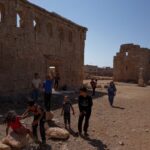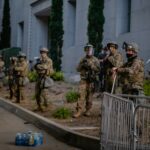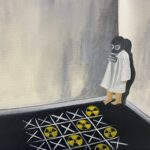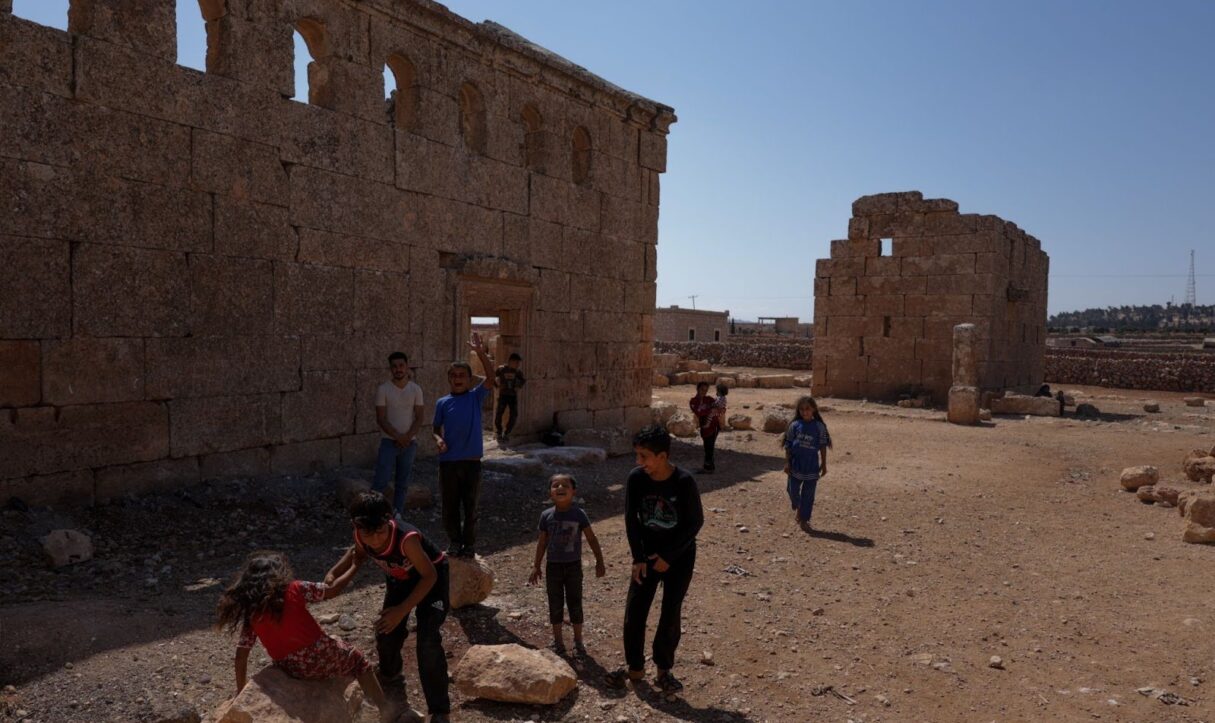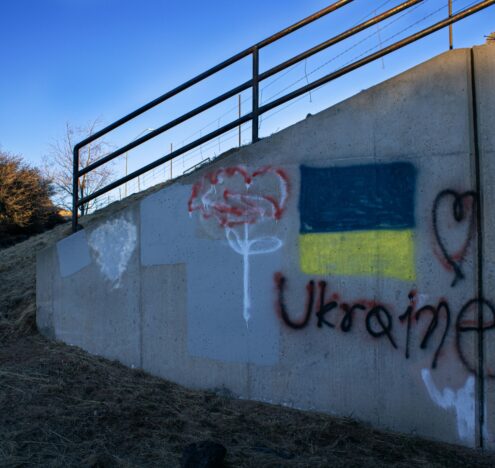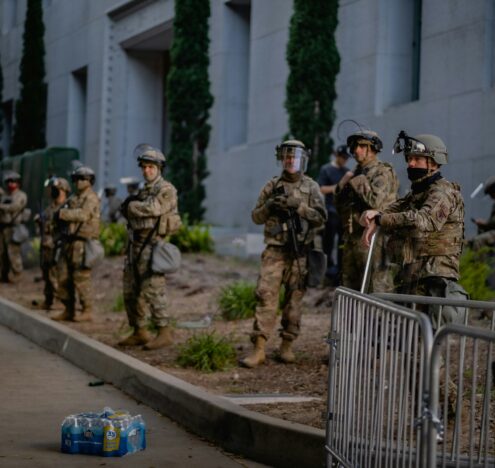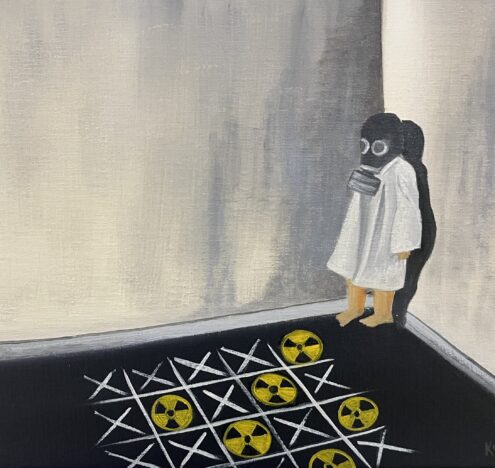A towering, 75-year-old man, Daher al-Sheikh, has his face wrapped in a red and white keffiyeh. He sits stooped over in the low-ceilinged, ancient stone structure where he and his family now reside. In 2017, he and his four children fled their home in Syria’s Hama governorate as regime forces pounded the area with airstrikes. “Our situation doesn’t allow us to return home. Our home is gone, our wells empty.” He explains that the former regime of Bashar al-Assad “didn’t leave us anything.”
As he sums up his situation, the sun sets in the west behind distant hills in nearby Turkey, casting shadows through the makeshift home. After a 13-year civil war that ended last December, al-Sheikh is gaunt and weathered, but his eyes remain a youthful bright blue. “What we have built here is OK,” he adds. “At least we have installed a battery now.”
His family is among the more than seven million Syrians who were displaced by the war within the country. He settled near Babisqa, a small town in the former rebel enclave of Idlib, in north-east Syria. Having left everything behind, he couldn’t afford to rent a plot in a farmer’s field, so he decided to erect his tent on a piece of public land tucked behind the hilltop settlement.
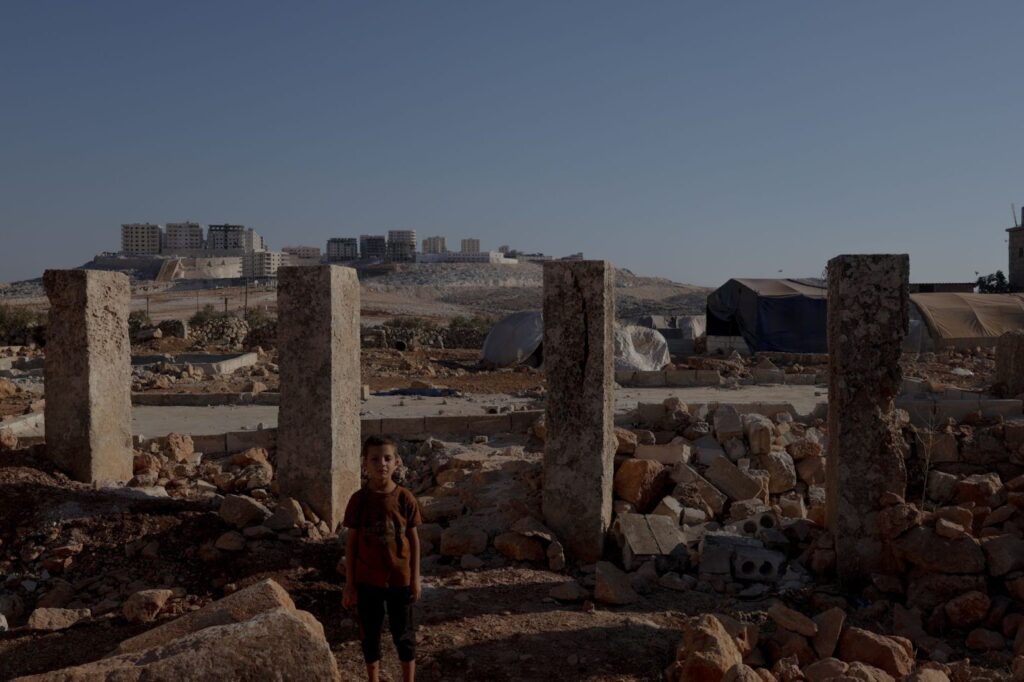
The land is one site in a network of ancient Byzantine ruins that stretch across northeastern Syria. Though they are far from lifeless these days, these sites are Syria’s “Dead Cities,” a scatter of 40 ancient towns and villages between Idlib and Aleppo. They are composed of around 800 structures. Since 2011, UNESCO has listed the Dead Cities as a World Heritage Site. Daher admits this fact mattered little to him.
Instead, he pitched his tent here for a simple reason:. This land was technically owned by the Assad government, which, six years into a brutal civil war, was certainly not in any position to be charging these new residents rent. As a result, throughout the war small communities of refugees, too poor to rent a plot of land, have built their lives around — and often from — the golden stones of forgotten Byzantium.
Idlib’s border town of Sarmada is booming. It is located near the Bab Al-Hawa crossing, which for years was one of the rebels’ few lifelines for arms, aid, and fighters flowing in from Turkey. These days, it is mostly trucks loaded with cement that come to fuel the effort to rebuild the country. Throughout the war, waves of displaced people arrived in the town. Many have been fortunate enough to find themselves in pseudo-towns of identikit huts built by Syrian and Turkish nonprofits. Others rent small plots in farmers’ olive groves, where they build ramshackle homes.
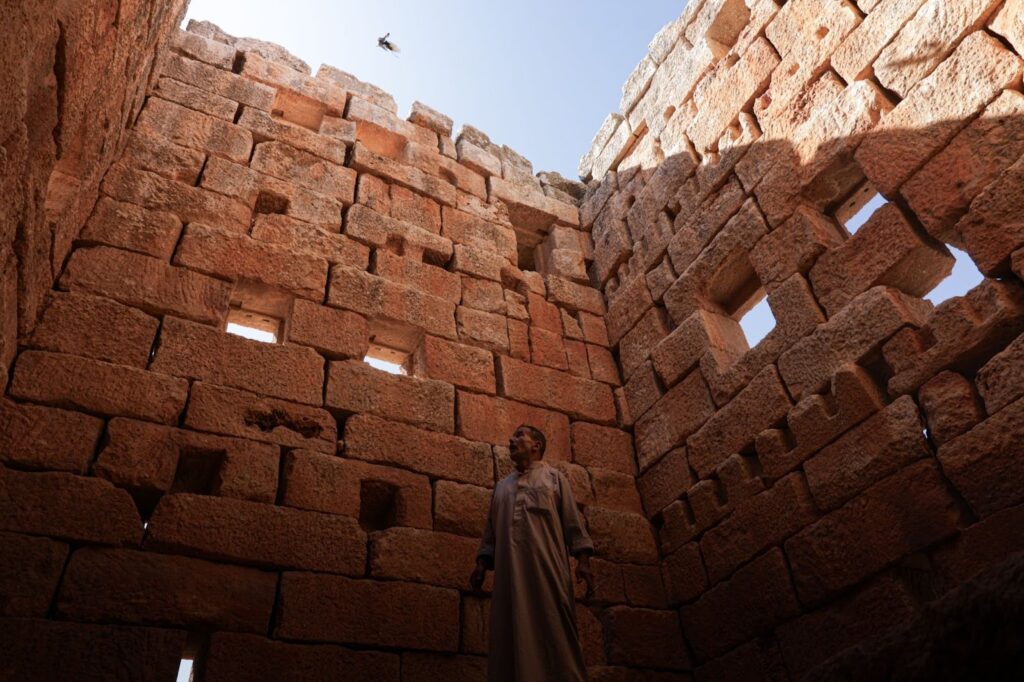
The hills surrounding the town are littered with the fractured remnants of another historic boomtown. Like Sarmada, the “Dead Cities” became rich through trade, although not from cement or Kalashnikovs, but rather a boom in the international olive oil trade around the third century AD.
Situated on a key trade route that linked Persia with Anatolia and the Mediterranean, prosperous Byzantine peasants built proud homes and grand churches — many of which still stand defiantly to this day. An earthquake and a grinding war between the Byzantine and Persian empires in the 7th century disrupted the olive oil trade, and regional trade routes shifted south following the Arab conquest in the 8th century. Soon the settlements were abandoned, their rock-hewn structures the only surviving testament.
Once again, many of these abandoned cities are emptying.
Since the Assad regime collapsed in December, some 1.8 million internally displaced Syrians have packed up their homes and begun to return home. They are a common sight on northern Syria’s roads these days. Many displaced people never expected to see their homes again, but now families perch on mountains of furniture loaded precariously on trucks, heading back to rubble and poisoned earth.
Then there are those who remain — those without the will or the means to start again. For them, returning remains a distant dream. You can still find their camps wedged in the sharp valleys of Idlib’s pointed hills.
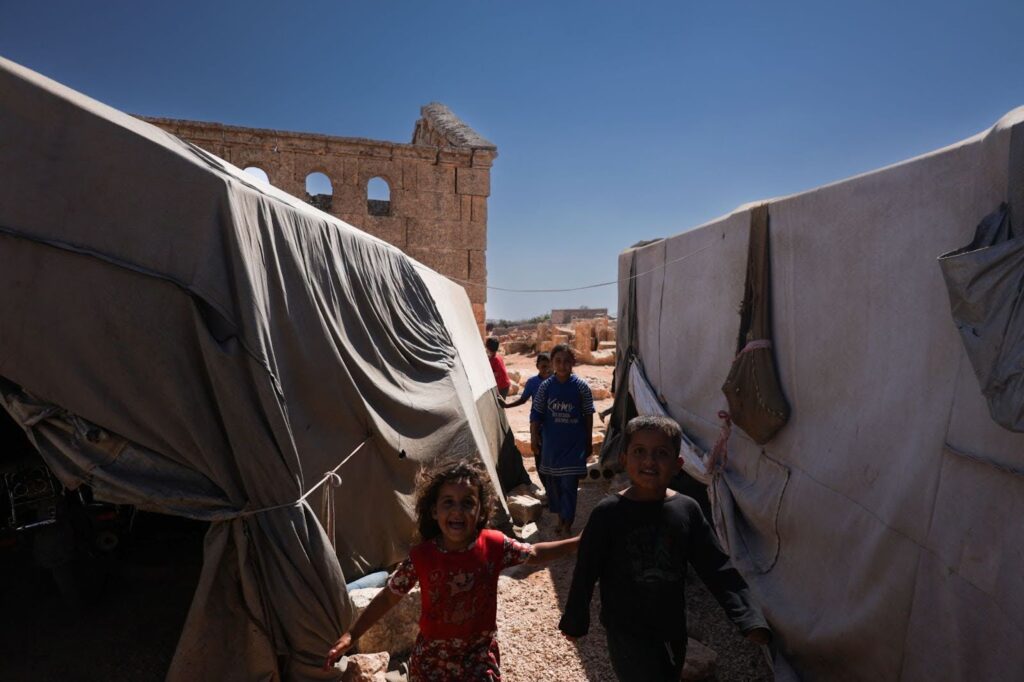
“It’s expensive to move,” al-Sheikh says. “You have to pay for the truck, and the cost to rebuild is not cheap. It can be thousands of dollars. It took me four months to build this place.” He gestures to the cinderblock wall he’s leaning on. “For that whole time, we lived in that tent outside.”
Between heavy drags on his cigarette, he explains that only people with enough money have been able to leave. “We can’t,” he adds, “even though there is nothing here for us.”
According to al-Sheikh, of the 12 families who took up residence in the squat structures sitting between the ruins, four have already left. They took everything with them, leaving only the concrete foundations of their homes, some of which were dug worryingly close to the site’s remains.
The war took a toll on the Dead Cities. Ayman al-Nabu, head of the Idlib Antiquities Center, says there are three primary types of damage. “A lot of damage has been caused by bombings from Russian and Syrian war planes,” he explains, “alongside the illegal prospecting and looting of antiquities in the region.”
The encroachment of displacement camps into the historic sites has also led to damage. “The creep of urbanization around these historic sites brings risk,” he adds. “There is the issue of the leaking sewage and the breaking of rocks on the sites, as well as their use in building homes.”
Sultan al-Sultan, 57, gathered his family and fled their home in the Homs countryside during the heavy days of the war. They landed in the settlement of Kafr Lusein, where they still reside in a modest stone hut.
All of his children, except a 30-year-old daughter, who has disabilities, have since left. Yet, for the last 14 years, he has lived here in the shadow of an ancient tower. In fact, the tower sits just yards from his hut, and many of its stones helped build the makeshift home. “I don’t know what it is,” he says. “We just use it to store the stuff that we use in the winter to keep warm.”
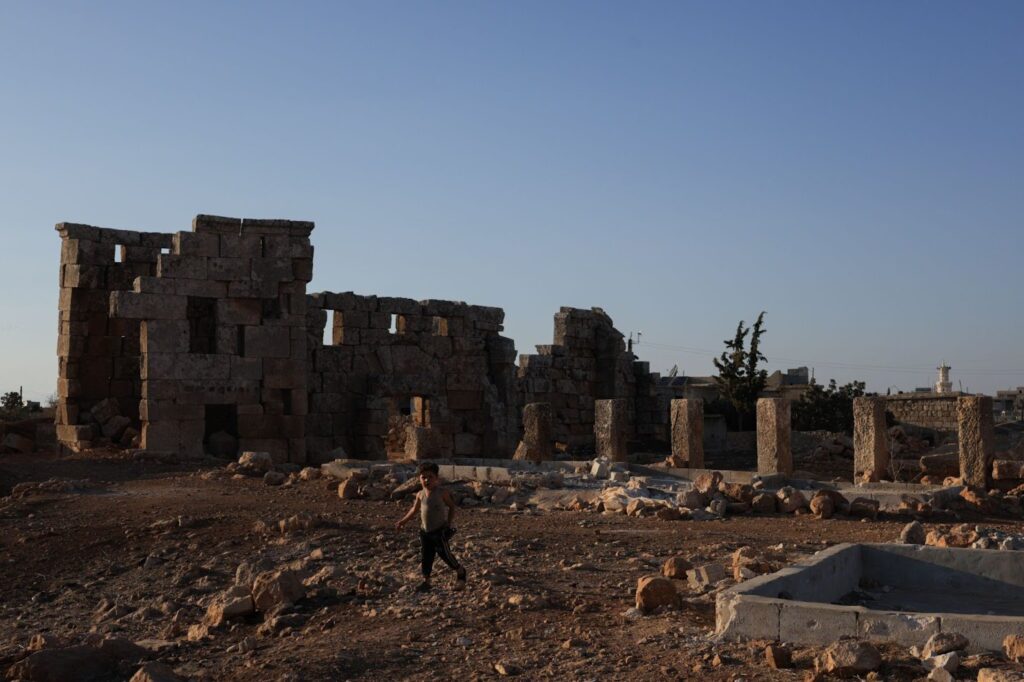
Al-Sultan smiles when he recalls that, during an earthquake a few years ago, neither the tower nor his home collapsed. “I could go back to my land if I wanted,” he explains. “I worked since I was 15 to build that home, to build a beautiful life for myself, but I would have to start again from zero. What man can do that at my age?”
He wanted to see what was left of his home, he says, but after he visited, “I realized that what I have built here is better than what I can do there.”
Still, life there is difficult. Since the war ended, he says, the amount of humanitarian aid has decreased, and his family doesn’t receive support from the new government or nonprofit groups to help them care for their daughter.
Although figures from the UN’s OCHA reveal that their humanitarian aid reach in Syria has increased from 1.6 million people per month to 3.47 million people between the first half of 2024 and 2025, many of those remaining amongst Idlib’s Dead Cities felt like they had been forgotten.
After the war ended, there was a shared sense that the government was no longer focused on the needs of those in Idlib. With the scale of the humanitarian demand across the country so immense, Syrians in this part of the country worry that the attention and money of the aid sector have been redirected elsewhere.
In Sarjableh, a small settlement of huts nestled close to the Turkish border, an old church complex rises from a knot of patchwork homes cobbled from fabric and corrugated iron.
Approaching the camp, a gang of children of varying ages streams out from their homes to see who has come. Most of the men are at work. The women huddle together, sitting among the rocks dislodged from the grand church towering above them.
“Come see my home,” says Thalje, 70, pointing to a small metal structure not far from the base of the ancient church. Inside, it is composed of just a kitchen and a small living space — the family’s bedding is stacked neatly at one end.
She fled her village on the border of Idlib and Hama governorates eight years ago. Like many others in her camp, she can’t afford to go home. “There is no life here,” she explains. “There are no schools, no electricity or running water.”
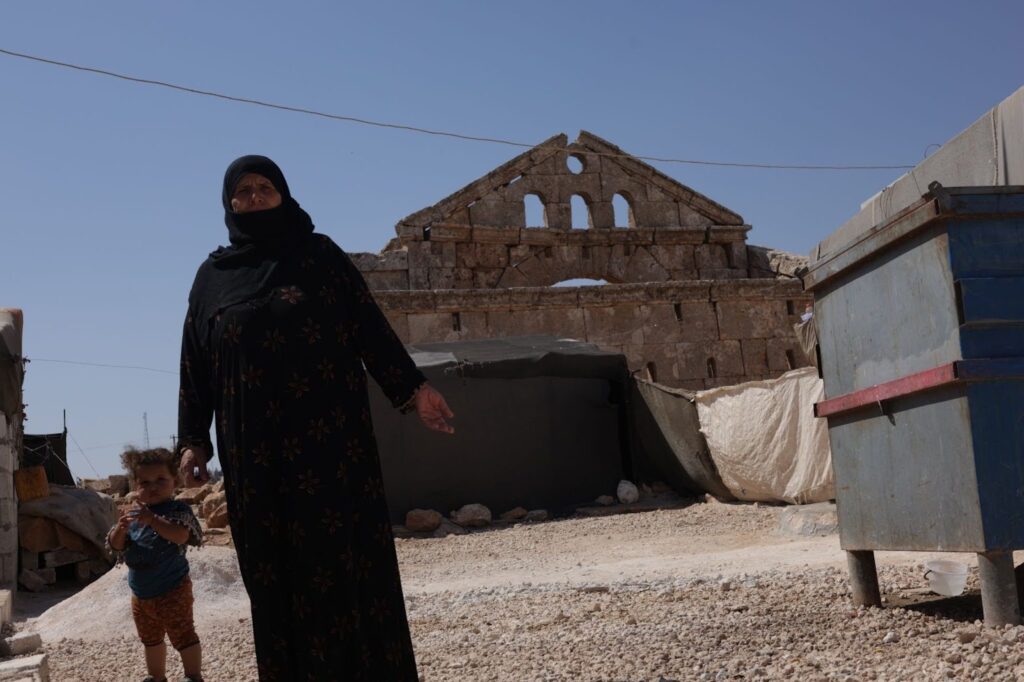
Many of the camp’s residents echo her complaints, insisting that support has dried up since the war ended. Khaled, Thalje’s husband, cuts in. “The number of those in need is huge,” he says. “It’s in the millions now. The government is struggling to manage everything.”
Their daughter Najja, who is cuddling her own child, says everyone wants to go home. “But after everything that happened, the destruction and suffering, we are all so traumatized.” When they visited their old home and found it in ruins, she recalls, “I cried because I knew that even after our liberation, our lives can’t go back to how they were.”


